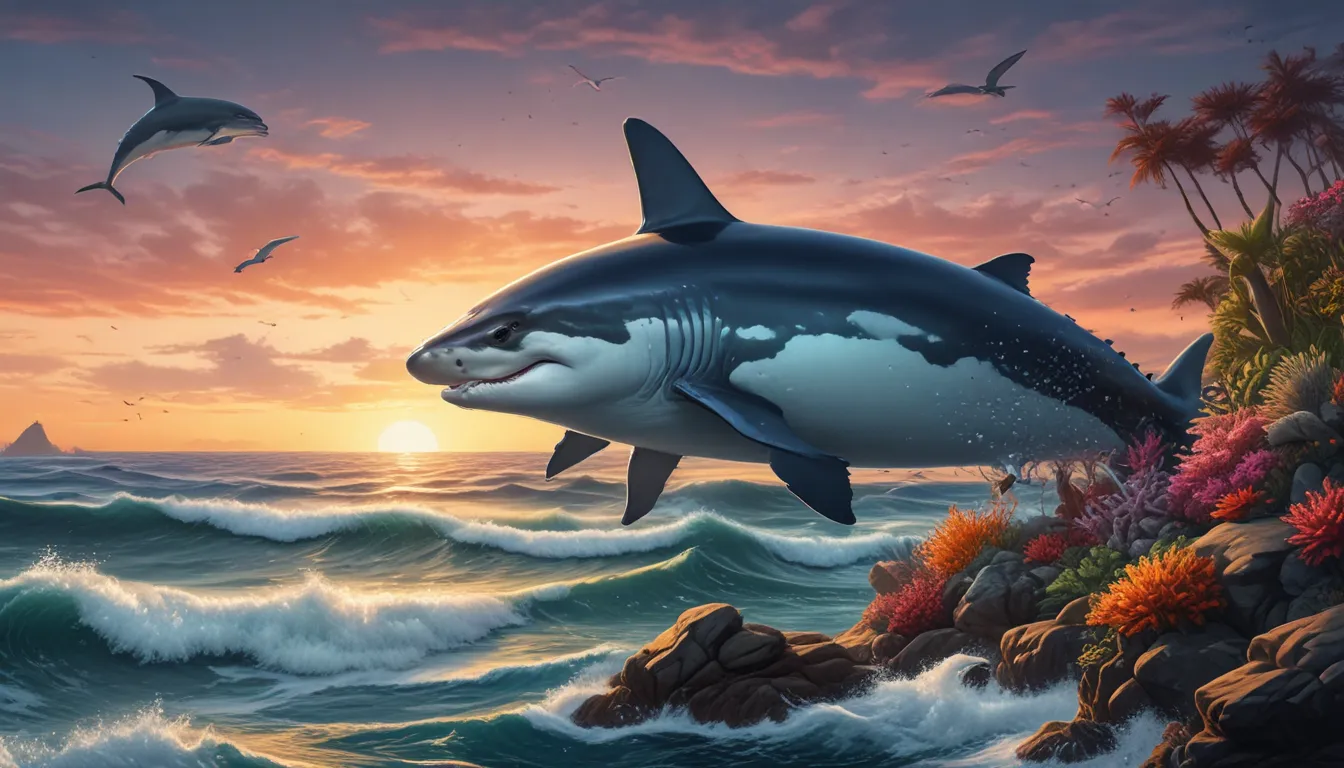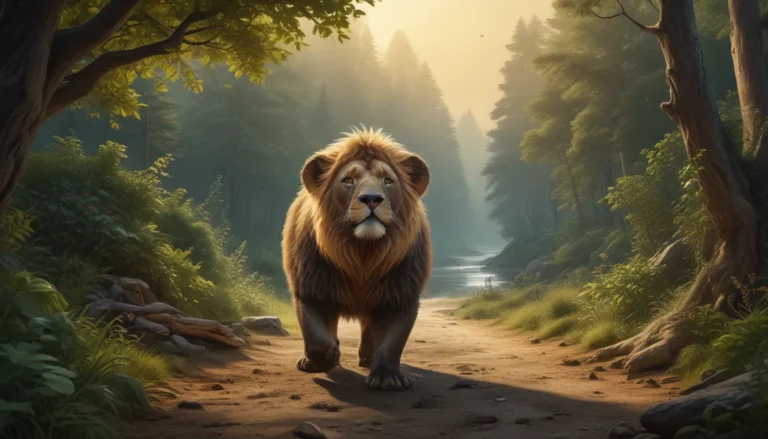The pictures we use in our articles might not show exactly what the words say. We choose these pictures to make you interested in reading more. The pictures work together with the words but don’t take their place. The words still tell you the important facts.
The ocean, a vast and mysterious realm, is home to an incredible array of wildlife that captivates our imagination and sparks our curiosity. From the smallest plankton to the largest whales, the creatures that inhabit the ocean play vital roles in maintaining the health and balance of marine ecosystems. As threats like pollution, climate change, and overfishing pose significant challenges to ocean wildlife, it becomes more crucial than ever to understand and appreciate the biodiversity that exists beneath the waves. Join us on a journey as we delve into the fascinating world of ocean wildlife, exploring 24 intriguing facts about its inhabitants.
A Dive into Ocean Wildlife
Ocean wildlife encompasses a diverse range of species that inhabit various habitats within the ocean, from coral reefs to deep-sea trenches. Each creature, no matter its size, plays a critical role in the intricate marine food web, contributing to the overall health and stability of ocean ecosystems.
- Plankton: Plankton, the foundation of the ocean food chain, consists of a diverse group of microscopic organisms, including phytoplankton and zooplankton.
- Coral Reefs: Often referred to as the "rainforests of the sea," coral reefs are incredibly biodiverse and support over a quarter of all marine species despite covering less than 1% of the ocean floor.
Giants of the Ocean
Some marine creatures stand out due to their impressive size and awe-inspiring presence.
- Blue Whale: The blue whale, the largest animal ever known to exist, can reach lengths of up to 100 feet and weights of approximately 200 tons.
- Giant Squid: Elusive inhabitants of the deep sea, giant squids have been recorded at lengths of about 43 feet, showcasing the mysteries that lie beneath the ocean's surface.
Unveiling Deep-Sea Mysteries
The deep sea, a realm less explored than outer space, harbors unique and fascinating creatures that adapt to its challenging conditions.
- Anglerfish: These creatures are known for their bioluminescent lures, which they use to attract prey in the darkness of the ocean depths.
- Vampire Squids: With a name as intriguing as their appearance, vampire squids thrive in the oxygen-minimal waters of the deep sea, showcasing the diversity of life in this mysterious environment.
Conservation Efforts for Ocean Wildlife
Protecting ocean wildlife is crucial for maintaining biodiversity and the health of our planet's marine ecosystems.
- Marine Protected Areas: These designated zones cover about 7.4% of the ocean and aim to safeguard critical habitats and species.
- Plastic Pollution: Millions of tons of plastic enter the ocean each year, posing a significant threat to marine life. Efforts to reduce single-use plastics are essential in combating this issue.
Marvels of Marine Behavior
Marine animals exhibit incredible behaviors that showcase their intelligence and adaptability.
- Dolphins: These intelligent creatures use complex vocalizations and echolocation to communicate and hunt in their underwater world.
- Sea Turtles: Navigating thousands of miles, sea turtles return to the beaches where they were born to lay their eggs, a remarkable phenomenon known as natal homing.
The Vital Role of Ocean Currents
Ocean currents play a crucial role in regulating the Earth's climate and supporting marine life.
- Great Ocean Conveyor Belt: This global circulation system transfers heat around the planet, influencing weather patterns and marine ecosystems.
- Phytoplankton: These tiny ocean plants contribute significantly to oxygen production, producing about 50% of the Earth's oxygen through photosynthesis.
Challenges Facing Ocean Wildlife
Human activities pose significant threats to ocean wildlife, impacting their survival and the health of marine ecosystems.
- Overfishing: Depletion of fish stocks worldwide has consequences for marine food webs and communities reliant on fishing.
- Climate Change: Ocean acidification and warming threaten coral reefs and the myriad of species that depend on them for survival.
Adapting to the Ocean Environment
Marine creatures have evolved unique adaptations to thrive in the diverse and challenging conditions of the ocean.
- Tardigrades: Known as water bears, these creatures can survive extreme conditions by entering a state of cryptobiosis.
- Bioluminescent Fish: Some deep-sea fish produce their own light through bioluminescence, aiding in communication, camouflage, and prey attraction.
The Importance of Marine Plants
Marine plants, such as seagrasses and mangroves, play crucial roles in coastal protection, carbon sequestration, and providing habitats for marine life.
- Mangroves: These plants protect shorelines from erosion and serve as nurseries for many fish species.
- Seagrasses: Vital in capturing carbon dioxide, seagrasses contribute significantly to combating climate change.
The Future of Ocean Exploration
With much of the ocean still unexplored, future discoveries could hold insights into new species and underwater landscapes.
- Technological Advancements: Autonomous underwater vehicles (AUVs) are revolutionizing ocean exploration and uncovering new frontiers.
- Hydrothermal Vents: The discovery of these vents challenged previous notions about where life could exist, revealing thriving ecosystems in unexpected places.
Protecting Endangered Marine Species
Efforts to protect endangered marine species are essential for preserving biodiversity and the health of marine ecosystems.
- International Whaling Commission: Working to regulate whaling activities and protect whales from extinction.
- Sea Turtle Conservation: Programs involve protecting nesting sites, regulating fishing practices, and raising awareness about threats these creatures face.
Climate Change Impacts on Oceans
Climate change is having profound effects on ocean ecosystems, endangering marine life and communities worldwide.
- Coral Bleaching: Rising sea temperatures lead to coral bleaching, threatening the survival of these vital ecosystems.
- Ocean Acidification: Increased CO2 absorption is making it harder for shellfish and corals to build their shells and skeletons, putting their survival at risk.
Embracing Ocean Mysteries
Exploring the wonders of ocean wildlife reveals the beauty and complexity of the marine ecosystem. Each fact uncovered deepens our understanding and appreciation for the underwater world and inspires us to protect these mysterious inhabitants and their habitats. By combining our knowledge with a passion for conservation, we can make a positive impact on the future of our planet's oceans. Let's embark on this journey together, as every small action creates ripples of change in the vast ocean of possibilities.
Conclusion
Ocean wildlife is a treasure trove of fascinating species and intricate ecosystems that contribute to the health and balance of our planet. By understanding, appreciating, and protecting these marine creatures, we can ensure a sustainable future for our oceans and all the life they support. Join us in our commitment to conservation and exploration as we continue to uncover the mysteries of the deep blue sea. Let's make waves of positive change together in the vast expanse of the ocean, where wonder and discovery await at every turn.






